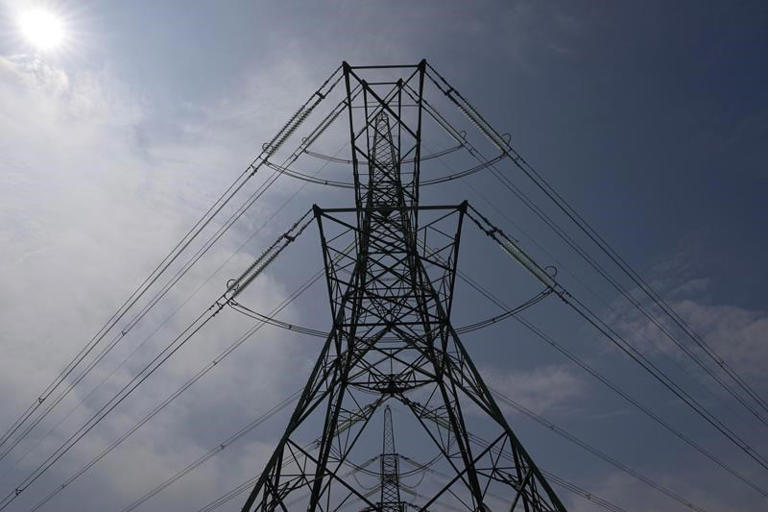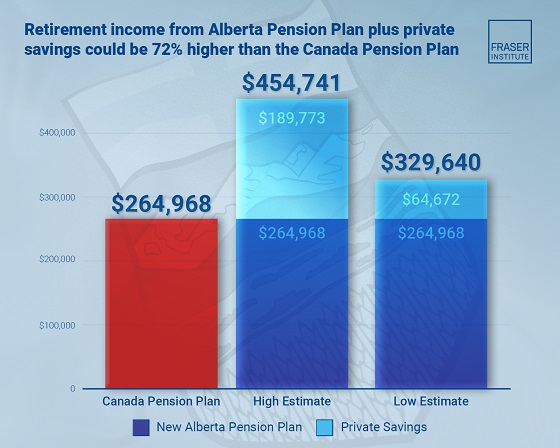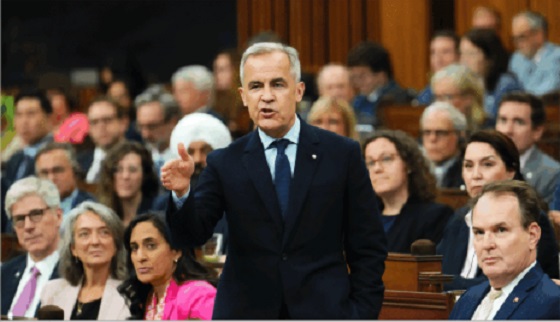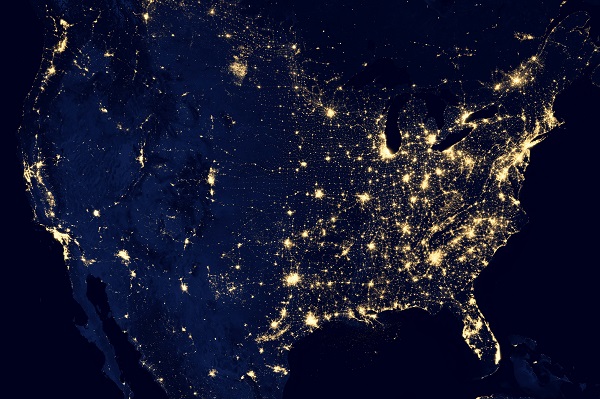Alberta
Federal electricity regulations threaten Albertans with high costs and power outages

Alberta responds to dangerous federal electricity regulations
Alberta has submitted detailed analysis showing why proposed federal regulations will threaten the province’s electricity grid.
Alberta is rapidly reducing emissions and targeting a carbon-neutral grid by 2050. Electricity emissions have declined by 53 per cent since 2005 and the province will have phased-out all coal generation by early 2024.
However, in August, the federal government released its draft Clean Electricity Regulations, which propose rigid rules to try and achieve net-zero electricity by 2035.
Based on expert analysis and industry consultations, Alberta’s government has submitted a detailed response outlining the technical problems with these regulations. The province’s analysis found that these regulations are unrealistic, ineffective and could compromise grid reliability to an unacceptable degree, resulting in the very real risk that Albertans will not have access to an essential service, like power, when they need it.
“These regulations are irresponsible and reckless, setting unrealistic targets and even banking on technologies that don’t exist. They will result in Albertans shouldering an unbearable cost for an electricity system that will no longer deliver the safety, reliability and affordability upon which our lives depend. We will not permit these dangerous and unconstitutional regulations to be imposed upon our province.”
“The standards and enforcement that Ottawa is proposing would put the safe, reliable and openly competitive market of Alberta’s electricity system at risk, all for targets that aren’t feasible or realistic. We cannot allow the reliability of our electricity to be compromised and risk public safety during the coldest months of the year, when people need the power most. We urge Ottawa to abandon these regulations and work with us on a realistic path that aligns with our own emissions-reduction goals.”
Some of the key problems outlined in Alberta’s technical submission include:
Flawed modelling creates unrealistic targets
The modelling tools used by the federal government lack the capability to properly assess Alberta’s energy-only market, including the province’s large share of cogeneration. The federal tools also use incomplete proxies to evaluate system reliability, leading them to drastically underestimate the negative impacts.
The federal modelling also relies heavily on technologies that are currently not ready to be deployed, assuming that they will soon be easily or quickly available. As a result, the federal modelling offers an unreliable and inaccurate picture of the costs, impacts on reliability and outcomes of these regulations. With better modelling, the federal targets would be unachievable.
Unachievable standards
The regulations propose unachievable emission standards, with limited flexibility and using a rigid approach that will not work. The standard is also based on unproven design specifications that will be very challenging for operators to meet, even under optimal conditions, and potentially impossible given the operational variability that occurs in electricity grids on a daily basis.
Notably, Ottawa’s standard is significantly higher than those proposed in the United States in May. Standards need to be based on actual performance.
Creating a retirement cliff
The proposed regulations set an end of prescribed life of 20 years, despite the typical operating life of natural gas units being closer to 45 years. This will create stranded assets and massive retirement “cliffs,” as large numbers of natural gas facilities go off-line.
Approximately 55 per cent of Alberta’s existing and approved natural gas generation installed capacity would be subject to the federal emissions standard by 2035. The unnecessary retirement of best-in-class natural gas units would have massive negative impacts on Alberta’s electricity system.
A one-size-fits-all approach won’t work
It is clear that the federal government drafted these regulations based largely on the electricity systems of Canada’s three largest provinces, which primarily rely upon hydroelectricity and nuclear energy.
Regional differences must be recognized, including flexibilities for those jurisdictions most negatively affected by the regulations. When Ottawa exempted home heating oil from the carbon tax, they recognized the need for this flexibility. Alberta and all provinces deserve the same consideration.
Flawed understanding of natural gas
Alberta currently relies on natural gas for more than 70 per cent of its generation. Alberta’s grid reliability is maintained through natural gas generation to backup and balance intermittent sources of power such as wind and solar. Considering the seasonality of renewable resources, Alberta anticipates the need for efficient high-capacity abated natural gas units for decades to come.
The regulations are so rigid and strict that they will effectively make it economically unviable for companies to build and operate natural gas facilities, including abating emissions through carbon capture, utilization and storage (CCUS).
Inflexible and punitive compliance options
The draft regulations are unnecessarily punitive with inflexible compliance options. As written, generators must not emit or they could face criminal penalties under the Canadian Environmental Protection Act, which includes a threat of incarceration. The regulations also increase red tape, increase costs, and offer very little flexibility for industry.
Limiting new technologies
The proposed federal electricity regulations will limit the adoption of important new technologies like hydrogen and CCUS by setting unproven and unrealistic performance standards for facilities. This imposes high costs, introduces investor risk, and creates challenges such as older facilities not being able to upgrade or retrofit new technologies. The result will be added costs and grid reliability risks.
Risks to reliability and safety
Alberta requires reliable electricity power in periods when intermittent sources are not generating. In December 2022, the 5,000 megawatts of installed renewable capacity generated as little as 187 megawatts of energy at one point during a period of cold weather with little wind or solar generation. Natural gas was needed to keep the province from experiencing blackouts.
The proposed allowable peaking provisions – needed to ensure that power is available at any time, under any weather conditions – will result in Alberta not having enough power available when needed most. This is dangerous and irresponsible. The proposed low annual-run-hour limit and emissions restrictions do not enable natural gas assets to respond when needed to increasing demands and the variability of intermittent generation.
A ridiculous approach to emergencies
The proposed treatment of emergencies is unacceptable. It is untenable for the federal government to require post-emergency sign-off by a federal minister. Alberta’s provincial system operator knows best when we have an emergency, not politicians in Ottawa. Provinces must have flexibility to call on generators during emergencies to protect the safety and security of families and businesses, without the threat of punitive action on system operators or generators.
Inadequate financial support for those hit hardest
The federal government released the draft regulations without providing the financial supports needed to enable this transition. Any claims otherwise are false. Federal modelling indicates the regulations will cost $58 billion – since 60 per cent of the net costs will fall on Alberta, the province should receive 60 per cent of the necessary federal funding. Also, the $58-billion figure is likely incorrect as it’s based on flawed modelling and does not adequately consider the distribution and transmission and other costs that will be required. Other third-party assessments further estimated the costs reaching into the trillions.
Next steps
Alberta continues to call on the federal government to respect jurisdictional authority and the enshrined rights and responsibilities of the provinces. The Supreme Court of Canada’s decision on the Impact Assessment Act confirmed the unconstitutionality of the federal government’s ongoing efforts to interfere with electricity and natural resource sectors of all provinces.
The Alberta-Ottawa working group continues to discuss how to bring Ottawa’s efforts to achieve carbon neutrality in the economy in line with Alberta’s Emissions Reduction and Energy Development Plan. If this alignment is not achieved, Alberta will chart its own path to protect its citizens and economy by ensuring the province has additional reliable, affordable and sustainable electricity brought onto the power grid.
Alberta officials will continue to share technical information and analysis on these regulations with the federal government as required to achieve a more practical and realistic approach.
Quick facts
- Alberta has reduced electricity emissions by 53 per cent since 2005.
- According to Canada’s Constitution, legislating and regulating the development of electricity explicitly falls within the jurisdiction of the province (92A (1) (c)).
- The Alberta Electric System Operator found that Alberta would face disproportionate risk and costs, compared with other provinces, as a result of the federal electricity regulations.
- The Public Policy Forum previously indicated that the cost of the federal electricity approach could be more than $1 trillion and as high as $1.7 trillion.
Alberta
Median workers in Alberta could receive 72% more under Alberta Pension Plan compared to Canada Pension Plan

From the Fraser Institute
By Tegan Hill and Joel Emes
Moving from the CPP to a provincial pension plan would generate savings for Albertans in the form of lower contribution rates (which could be used to increase private retirement savings while receiving the same pension benefits as the CPP under the new provincial pension), finds a new study published today by the Fraser Institute, an independent, non-partisan Canadian public policy think-tank.
“Due to Alberta’s comparatively high rates of employment, higher average incomes, and younger population, Albertans would pay a lower contribution rate through a separate provincial pension plan while receiving the same benefits as under the CPP,” said Tegan Hill, director of Alberta policy at the Fraser Institute and co-author of Illustrating the Potential of an Alberta Pension Plan.
Assuming Albertans invested the savings from moving to a provincial pension plan into a private retirement account, and assuming a contribution rate of 5.85 per cent, workers earning the median income in Alberta ($53,061 in 2025) could accrue a stream of retirement payments totalling $454,741 (pre-tax)—a 71.6 per cent increase from their stream of CPP payments ($264,968).
Put differently, under the CPP, a median worker receives a total of $264,968 in retirement income over their life. If an Alberta worker saved the difference between what they pay now into the CPP and what they would pay into a new provincial plan, the income they would receive in retirement increases. If the contribution rate for the new provincial plan was 5.85 per cent—the lower of the available estimates—the increase in retirement income would total $189,773 (or an increase of 71.6 per cent).
If the contribution rate for a new Alberta pension plan was 8.21 per cent—the higher of the available estimates—a median Alberta worker would still receive an additional $64,672 in retirement income over their life, a marked increase of 24.4 per cent compared to the CPP alone.
Put differently, assuming a contribution rate of 8.21 per cent, Albertan workers earning the median income could accrue a stream of retirement payments totaling $329,640 (pre-tax) under a provincial pension plan—a 24.4 per cent increase from their stream of CPP payments.
“While the full costs and benefits of a provincial pension plan must be considered, its clear that Albertans could benefit from higher retirement payments under a provincial pension plan, compared to the CPP,” Hill said.
Illustrating the Potential of an Alberta Pension Plan
- Due to Alberta’s comparatively high rates of employment, higher average incomes, and younger population, Albertans would pay a lower contribution rate with a separate provincial pension plan, compared with the CPP, while receiving the same benefits as under the CPP.
- Put differently, moving from the CPP to a provincial pension plan would generate savings for Albertans, which could be used to increase private retirement income. This essay assesses the potential savings for Albertans of moving to a provincial pension plan. It also estimates an Albertan’s potential increase in total retirement income, if those savings were invested in a private account.
- Depending on the contribution rate used for an Alberta pension plan (APP), ranging from 5.85 to 8.2 percent, an individual earning the CPP’s yearly maximum pensionable earnings ($71,300 in 2025), would accrue a stream of retirement payments under the total APP (APP plus private retirement savings), yielding a total retirement income of between $429,524 and $584,235. This would be 22.9 to 67.1 percent higher, respectively, than their stream of CPP payments ($349,545).
- An individual earning the median income in Alberta ($53,061 in 2025), would accrue a stream of retirement payments under the total APP (APP plus private retirement savings), yielding a total retirement income of between $329,640 and $454,741, which is between 24.4 percent to 71.6 percent higher, respectively, than their stream of CPP payments ($264,968).

Joel Emes
Alberta
Alberta ban on men in women’s sports doesn’t apply to athletes from other provinces

From LifeSiteNews
Alberta’s Fairness and Safety in Sport Act bans transgender males from women’s sports within the province but cannot regulate out-of-province transgender athletes.
Alberta’s ban on gender-confused males competing in women’s sports will not apply to out-of-province athletes.
In an interview posted July 12 by the Canadian Press, Alberta Tourism and Sport Minister Andrew Boitchenko revealed that Alberta does not have the jurisdiction to regulate out-of-province, gender-confused males from competing against female athletes.
“We don’t have authority to regulate athletes from different jurisdictions,” he said in an interview.
Ministry spokeswoman Vanessa Gomez further explained that while Alberta passed legislation to protect women within their province, outside sporting organizations are bound by federal or international guidelines.
As a result, Albertan female athletes will be spared from competing against men during provincial competition but must face male competitors during inter-provincial events.
In December, Alberta passed the Fairness and Safety in Sport Act to prevent biological men who claim to be women from competing in women’s sports. The legislation will take effect on September 1 and will apply to all school boards, universities, as well as provincial sports organizations.
The move comes after studies have repeatedly revealed what almost everyone already knew was true, namely, that males have a considerable advantage over women in athletics.
Indeed, a recent study published in Sports Medicine found that a year of “transgender” hormone drugs results in “very modest changes” in the inherent strength advantages of men.
Additionally, male athletes competing in women’s sports are known to be violent, especially toward female athletes who oppose their dominance in women’s sports.
Last August, Albertan male powerlifter “Anne” Andres was suspended for six months after a slew of death threats and harassments against his female competitors.
In February, Andres ranted about why men should be able to compete in women’s competitions, calling for “the Ontario lifter” who opposes this, apparently referring to powerlifter April Hutchinson, to “die painfully.”
Interestingly, while Andres was suspended for six months for issuing death threats, Hutchinson was suspended for two years after publicly condemning him for stealing victories from women and then mocking his female competitors on social media. Her suspension was later reduced to a year.
-

 Addictions1 day ago
Addictions1 day agoWhy B.C.’s new witnessed dosing guidelines are built to fail
-

 Frontier Centre for Public Policy2 days ago
Frontier Centre for Public Policy2 days agoCanada’s New Border Bill Spies On You, Not The Bad Guys
-

 Business1 day ago
Business1 day agoCarney Liberals quietly award Pfizer, Moderna nearly $400 million for new COVID shot contracts
-

 Energy2 days ago
Energy2 days agoCNN’s Shock Climate Polling Data Reinforces Trump’s Energy Agenda
-

 Business1 day ago
Business1 day agoMark Carney’s Fiscal Fantasy Will Bankrupt Canada
-

 Opinion1 day ago
Opinion1 day agoPreston Manning: Three Wise Men from the East, Again
-

 Opinion1 day ago
Opinion1 day agoCharity Campaigns vs. Charity Donations
-

 COVID-191 day ago
COVID-191 day agoTrump DOJ dismisses charges against doctor who issued fake COVID passports






